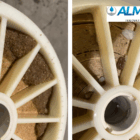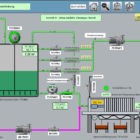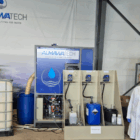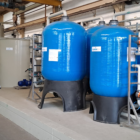A centrifugal pump is a flow machine that converts kinetic energy into pressure energy in order to pump liquids. It works on the principle of centrifugal force: a rotating impeller accelerates the fluid, which is then guided through a spiral-shaped housing, building up pressure.
Structure and components
Impeller
The heart of the pump. It can be open, semi-closed or closed, depending on the application. The impeller generates the necessary centrifugal force through rotation.Pump casing
Guides the fluid from the inlet to the outlet and converts the kinetic energy into pressure. Volute casings increase pressure efficiency.Shaft and bearings
The shaft transmits the drive force of the motor to the impeller. Bearings ensure mechanical stability.Sealing systems
Prevent liquid from escaping along the shaft. These include stuffing boxes or mechanical seals.Drive
Normally an electric motor, more rarely an internal combustion engine or a turbine.
Functionality
The centrifugal pump works continuously. As soon as the impeller is in motion, it generates a centrifugal force through rotation, which accelerates the fluid from the center of the impeller to its edge. The high speed of the fluid is converted into pressure in the housing. The pressure generated in this way enables the fluid to be conveyed through pipes.
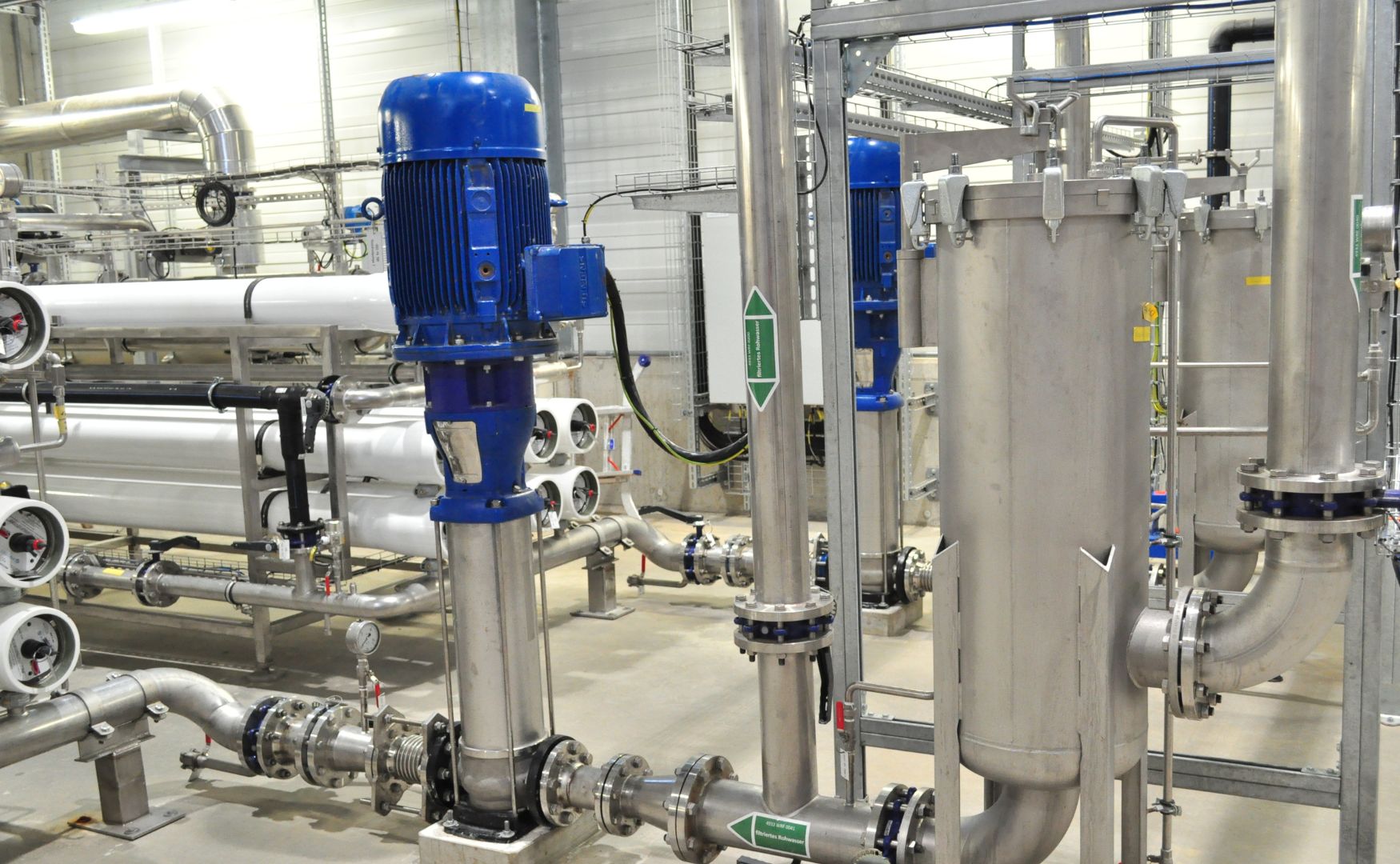
Photo: Multistage centrifugal pump for feeding our ALMA OSMO reverse osmosis system
Types of centrifugal pumps
Single-stage centrifugal pump
With one impeller; suitable for medium pressure and high flow rate applications.Multistage centrifugal pump
Has several impellers connected in series to generate high pressures. Frequently used in water treatment and desalination.Vertical centrifugal pump
Compact and space-saving, particularly suitable in confined spaces and for pumping large volumes of water.Horizontal centrifugal pump
Easy to maintain and install; widely used in industrial processes.
Technical specifications
- Delivery head: Ranges from a few meters to over 1,000 meters in multi-stage pumps.
- Delivery rate: Up to several thousand cubic meters per hour.
- Pressure range: Up to 300 bar in special applications.
- Materials: Stainless steel, cast iron or plastics, depending on chemical resistance.
Areas of application
Industrial water treatment
In reverse osmosis systems and other high-pressure systems for pumping pure water.Wastewater treatment
Centrifugal pumps transport wastewater to sewage treatment plants or industrial treatment plants.Chemical industry
Suitable for pumping chemicals, especially in corrosive environments.Cooling water circuits
An essential component in power stations and industrial plants for moving large quantities of cooling water.Heating and boiler systems
Pumping hot water or steam in closed circuits.
Advantages
- High efficiency: Particularly suitable for continuous applications.
- Robustness: Long service life, even with abrasive media.
- Flexibility: Scalable for different delivery heights and quantities.
- Low maintenance costs: thanks to the simple design and durable components.
Challenges
- Cavitation: Can occur if the pressure at the impeller inlet is too low. This leads to damage to the impeller and reduced efficiency.
- Wear with abrasive media: Can lead to increased maintenance requirements.
- Leakage: Occurs when seals are defective and requires regular inspections.
Conclusion
The centrifugal pump is a versatile and reliable technology in industrial water and wastewater treatment. Its ability to pump large volumes of liquid efficiently and under high pressure makes it an indispensable component of numerous applications. ALMAWATECH uses centrifugal pumps in various systems to achieve optimum results in the treatment of water and wastewater.
For further information on our products, please feel free to contact us at any time!


